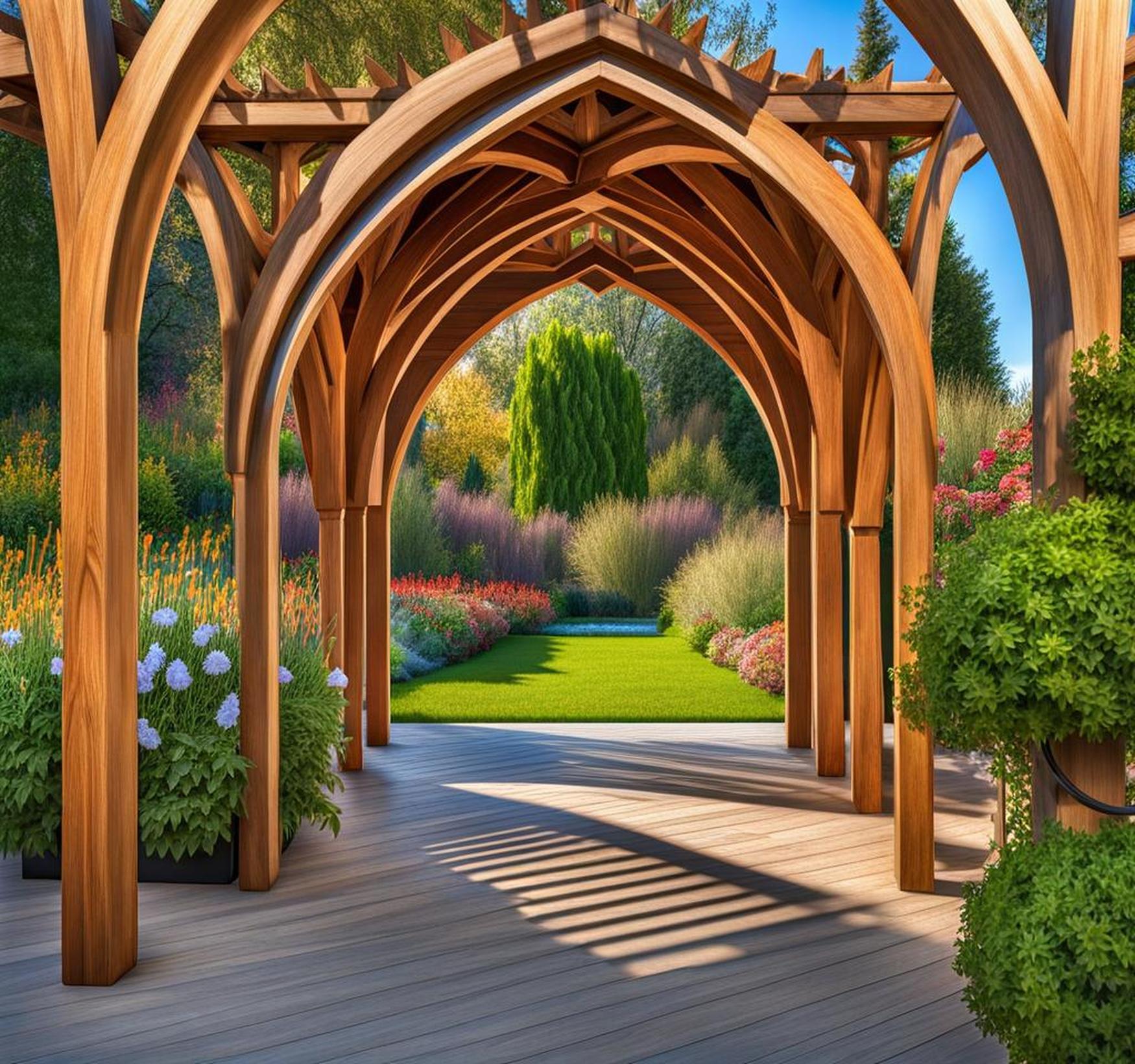Garden arches made from natural wood provide a timeless accent that enhances landscapes in any season. These classic structures offer versatility that makes them a favorite for gardens worldwide.
With styles ranging from rustic to contemporary, wooden arches beautifully frame entries, pathways, or cozy nooks. They provide sturdy support for flowering vines and visual interest for all types of gardens.
Benefits of Wooden Garden Arches
Classic Natural Material
Wood’s natural beauty complements any garden style, from formal spaces to wildflower meadows. The traditional, earthy material seamlessly blends into landscapes for a cohesive look.
Wooden arches are also more eco-friendly than metal or plastic alternatives. Using sustainable, locally-sourced woods helps reduce environmental impact.

Support for Climbing Plants
Lattice-patterned wooden arches make perfect structures for training climbing vines and roses. The study frames support heavy flowering plants without sagging or shifting.
You can also grow edible climbers like pole beans, cucumbers, or peas on suitable wooden arch designs. The vertical growing space increases yields.
Garden Accent Pieces
Beyond plant supports, wooden arches adorn gardens as decorative accents. Frame entryways to define spaces. Use over pathways to create shaded spots. Or place them as garden dividers for added privacy.
The arches also provide anchor points for hanging lanterns, plant baskets, wind chimes and other ornaments. Get creative with incorporating them into your layout!
Customizable Style
Wooden arches come in diverse designs to match your garden’s look and feel. Choose from traditional cottage inspired models or sleek contemporary versions. Rustic and Asian-influenced styles are also popular options.
You can also stain or paint the wood to coordinate with colors in your landscape. Add classic finials or other embellishments for one-of-a-kind flair.
Key Considerations for Wooden Arches
Selecting Durable, Long-lasting Wood
For wooden arches that stand the test of time, select wood types resistant to rot and insect damage. Teak, cedar, and redwood naturally withstand weather fluctuations and won’t easily warp or crack.
Also inspect arches for quality joinery and sturdy bracing. Durable construction prevents sagging and keeps the arch stabilized in place.
Proper Installation and Placement
Set up your wooden arch in a suitable spot before growing vines or hanging decorations. Freestanding models require firmly staking the posts deep into the ground. Anchoring to an existing wall or surface is also an option.
If mounting against a wall, leave ample space between it and the arch to allow airflow. This prevents moisture buildup leading to wood rot.
Ongoing Maintenance
Left untouched, wooden arches easily accumulate dirt, mold, and mildew. Seasonal cleaning with a soft brush and mild soap keeps them looking fresh. Follow up annually with a penetrating wood sealant to protect from moisture and pests.
It’s also wise to inspect arches after storms for any damage. Address minor issues promptly before they worsen.
Complementary Design Elements
Choose an arch size and shape suited to the area you want to accent or cover. For example, frame an entryway with a tall, narrow arch versus using a wide arch over a seating space.
Coordinate with hardscaping materials like walkways. Mix and match with pots, plantings, lighting, and garden art to complete the look.
Enjoying Wooden Arches Year-Round
Spring and Summer Usage
The warmer seasons are perfect for training flowering vines up wooden arches. Imagine fragrant roses or purple clematis cascading from the lattice. Use the cool shaded spots underneath for relaxing or dining.
You can also grow cucumbers, pole beans, peas, and other edibles up arching frames. The vertical structure saves space and keeps produce off the ground.
Fall and Winter Usage
Though vegetation dies back, wooden arches still add structure during fall and winter. Drape twinkling lights over the frame to cast a magical glow on crisp nights. Or anchor festive holiday wreaths and decoration to spread seasonal joy.
Come late fall, arrange plump pumpkins and gourds around the base of arches for Instagram-worthy displays. The arching shapes make stunning backdrops for photos.
Versatile wooden arches enhance gardens throughout the seasons with their timeless natural style. They adorn paths, provide plant supports, and create cozy spaces. For beauty and utility that lasts for years, incorporate one of these charming structures into your landscape.
Wooden arches become graceful focal points welcoming guests and lighting up your garden.
